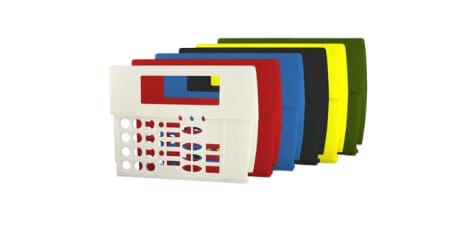
Acrylonitrile Butadiene Styrene (ABS) filament is one of the earliest and most commonly used 3D printing materials. It gained popularity due to its use in Fused Deposition Modeling (FDM) technology. Known for its strength, flexibility, and high-temperature resistance, ABS has been a preferred choice for both hobbyists and professionals. However, in recent years, ABS has become less used over new polymers that are less prone to warping and less toxic to consumers.
ABS is a thermoplastic polymer made from the polymerization of styrene and acrylonitrile in the presence of polybutadiene. The proportions of these substances can vary, which affects the properties of the final product. ABS combines the strength and rigidity of acrylonitrile and styrene polymers with the toughness of polybutadiene rubber.
ABS filament is best suited for printing durable, heat-resistant parts and functional prototypes.
Automotive Components: ABS is extensively used in the automotive industry for creating components like dashboards, interior panels, and various trim parts due to its durability and heat resistance.
Lab: Some equipment needs ABS for its chemical resistance properties. For these cases, ABS is required to ensure the plastic doesn’t react with the chemicals used.
Standard ABS filament offers a good balance of strength, flexibility, and temperature resistance. Advanced forms may include additives for UV resistance, flame retardancy, or to enhance mechanical properties like impact resistance.
Future developments in ABS filament are likely to focus on reducing its tendency to warp, improving its environmental friendliness, and enhancing its mechanical properties. Biodegradable alternatives and composites with improved characteristics are areas of ongoing research.



781 high st. reservoir vic 3073, australia